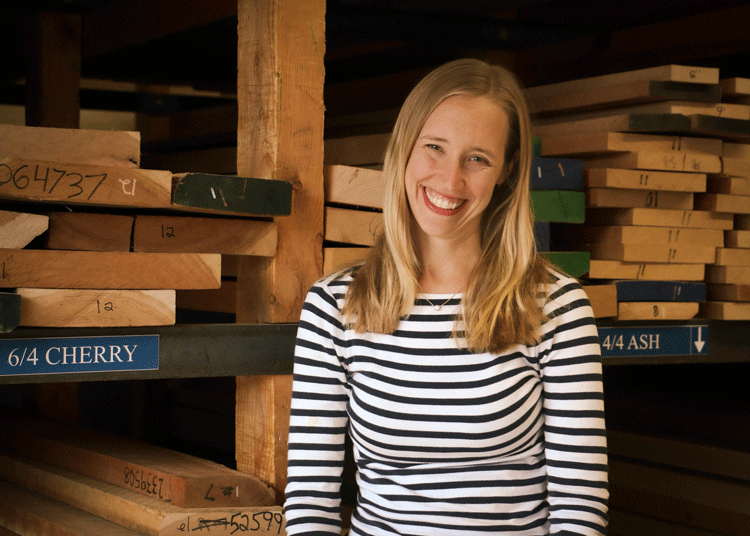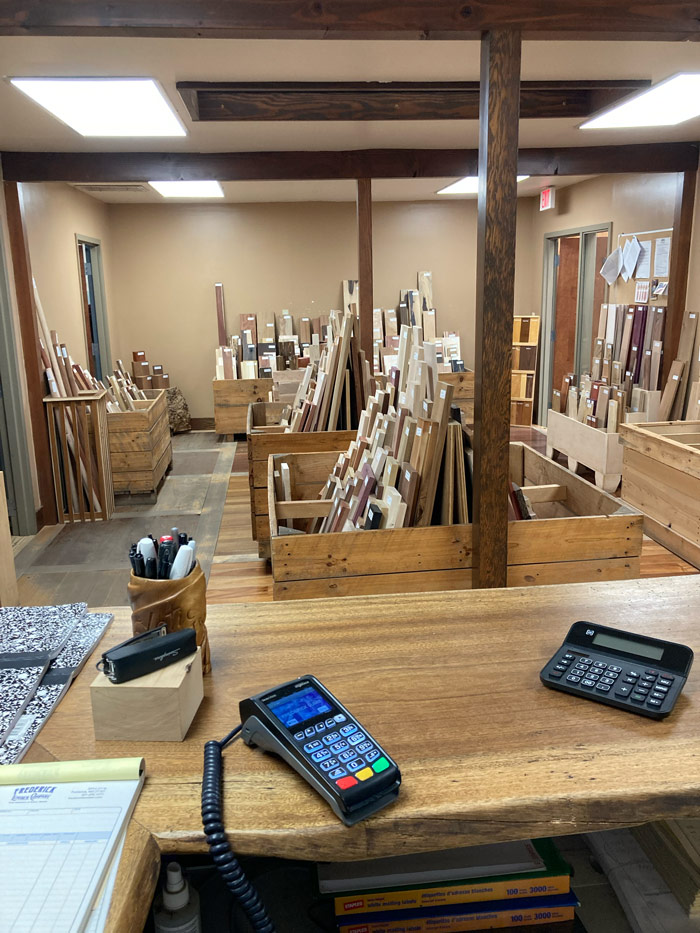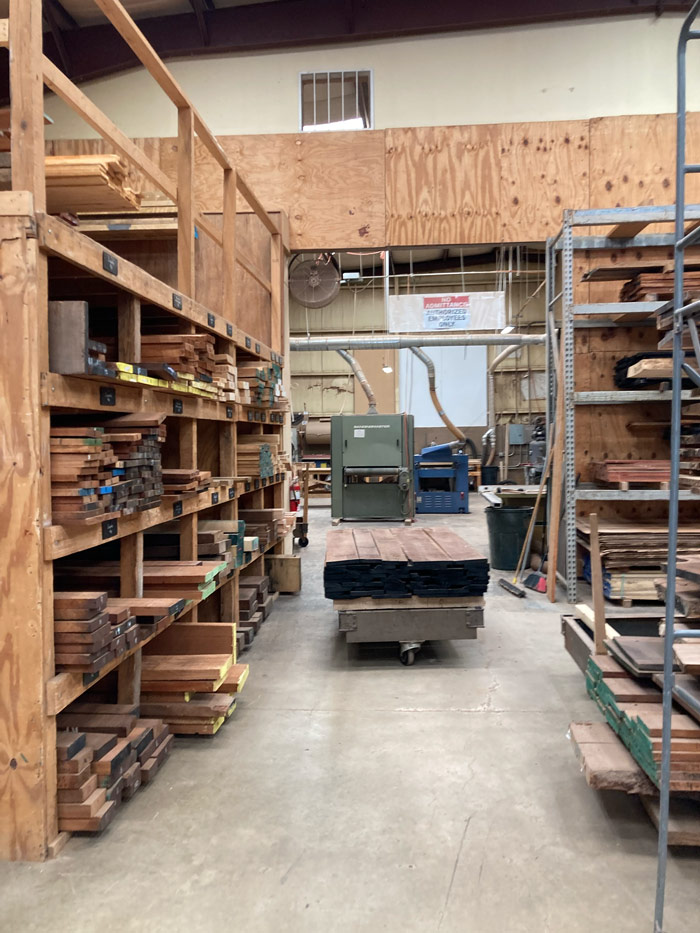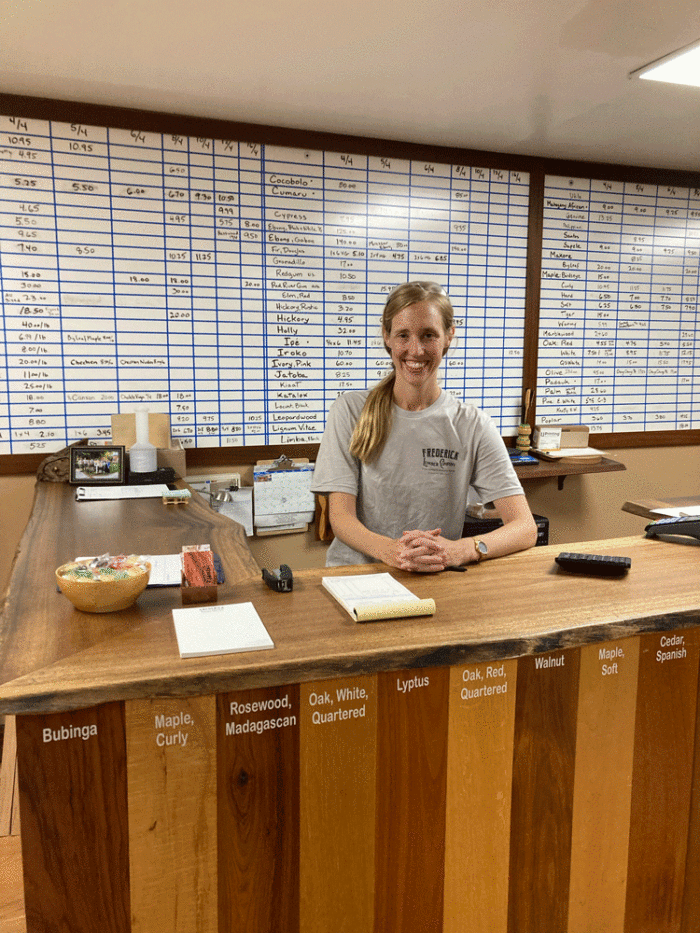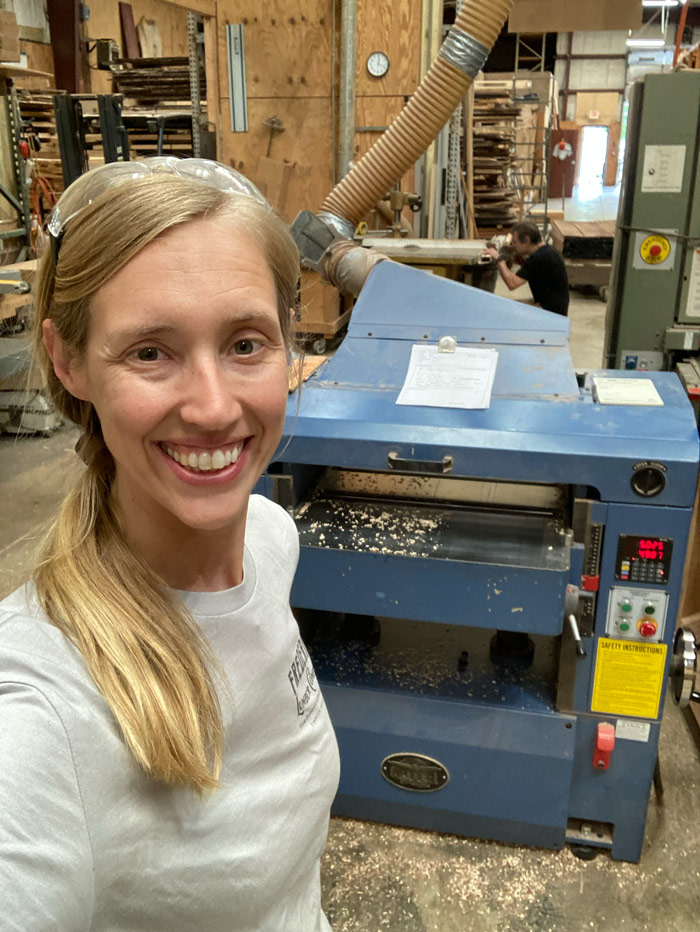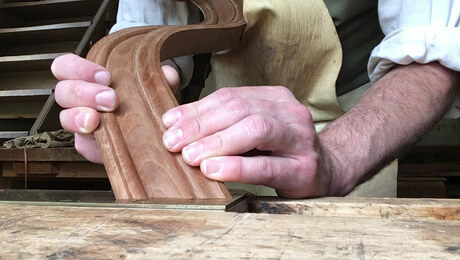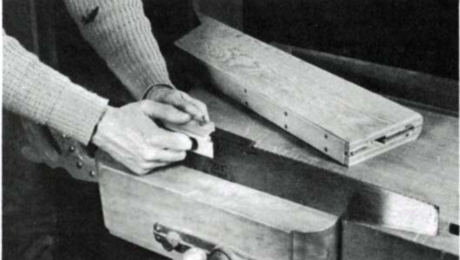A beginner walks into a lumberyard
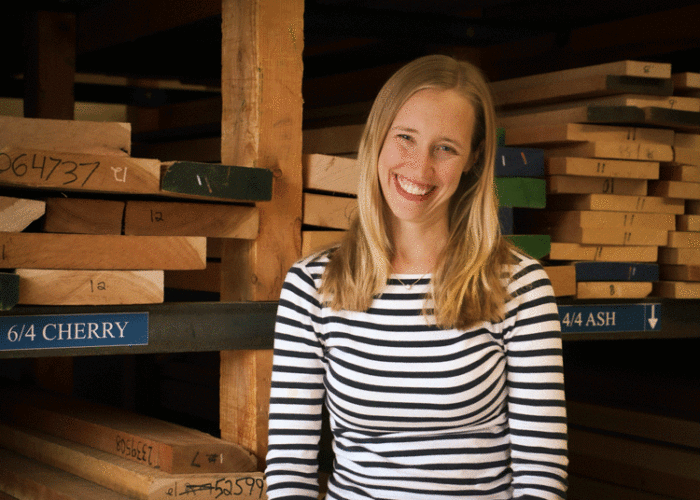
Let’s be honest, lumber yards are not exactly known for their hospitality. While doctors’ offices give out lollipops, lumber yards dish out side-eye and the unspoken question “Do you belong here?” Well, I’m here to say that you do belong, and if a lumber yard is worth its salt, their staff will treat you with respect and help you out.
Only two years after my first visit to my local hardwood lumber store, I became a part-time employee there, quoting board foot prices and slinging “sticks” like the rest of ‘em. My favorite customers were often the beginners, instantly recognizable by their sheer enthusiasm: ” Wow, it smells so good in here!” If a first visit to the lumber store is in your future, here are a few basics to know before you go.
How To Talk About Wood
If you only have time for one thing, internalize these terms for the three dimensions of a board: thickness, width, and length, and use them in that particular order. Beginners sometimes confuse width and thickness, or use extraneous words like “depth” or “height.” For a bonus, refer to the sides of a board with the words face, edge, and end. Most of the confusion I experience in conversations with customers can be resolved by clearing up those simple terms.
Selecting a Board
Even the loveliest of lumber stores (like mine) are unheated/uncooled warehouses full of big racks of wood. Bring a pair of gloves, and dress for the weather, because you’ll typically search through the racks yourself. There is no perfect board, but some boards are better than others. Take your time selecting them. Sight down the board to see how twisted or bowed it might be.
Feel its weight in your hands. Check to see if the board contains too much sapwood for your liking. Will the knots interfere with your plans, or can you work around them? Feel free to put it back and select a better board. But don’t search endlessly for the perfect board; we love wood because it is imperfect. It is not laminate!
Lumber Store Etiquette
As long as you leave the lumber as neatly stacked as you found it, you shouldn’t get the stink-eye for taking your time. Be mindful of other customers. Don’t be afraid to ask questions. Yes, you probably have to buy the whole board, but you can ask the lumber yard to make a couple of cross-cuts on your boards so that they fit in your hatchback. Be prepared to wait several days for additional milling services.
Thickness in Quarters
The first dimension you’ll consider when choosing a board of lumber is the thickness. We measure the thickness of a board in quarters, while it is still rough-sawn. A 4/4 (pronounced “four quarter”) board is one inch thick. An 8/4 “eight-quarter” board is two inches thick. But the milling process (making your wood smooth, and square, and fancy) will reduce the thickness by approximately ¼ of an inch. This explains why a so-called 1×8 “one by eight” (nominal size) is only ¾ of an inch thick.
Rough Sawn vs Surfaced
In the tree’s journey to become a usable board of wood, there are many steps (felling, milling, drying). Rough-sawn wood has come off the sawmill roughly sawn into the shape of a board. But this board will likely have some form of twist, bow, or cup, as well as rough edges from the saw blade. It takes an additional set of steps to make the board flat and square–a process that is also called “milling.”
Milling – Someone’s Got To Do It
If you buy rough-sawn lumber, you will likely need three machines to mill it square – a jointer square up one face and one edge. A thickness planer makes the second face parallel to the first face. A table saw rips the second edge parallel to the first edge. (Or you can do it by hand with a hand plane, combination square, winding sticks, and no small amount of sweat).
If you don’t have the machines for milling rough-sawn lumber, you may have two options. You can buy wood that is already surfaced, sometimes called “S4S” meaning surfaced four sides, which is convenient but pricey. Or you can ask your lumber yard if they offer milling services. Many lumber yards charge a reasonable fee to run your boards across the jointer or planer.
How Much Is The Lumber Going to Cost?
The short answer is a lot. The long answer is: it depends. Prices depend on the species, supply and demand, economics, environmental factors like the emerald ash borer, and how responsible your lumber yard is at adjusting prices. Be advised– prices should go up and down; be suspicious if they only ever go up!
The lumber industry has two ways of pricing lumber to sell you: Board Foot and Linear Foot. A board foot is essentially a 12-in. x 12-in. x 1-in cube of wood. We calculate the price of each rough-sawn board individually, multiplying the thickness (inches), by width (inches) by length (feet), and dividing by 12 to get the number of board feet in a single board. Multiply that by the board foot price to get the cost of the board.
You don’t have to bring a calculator, the lumber yard will be happy to calculate the price for you. But if you’re buying 8/4 walnut at $15.75 a board foot, don’t be surprised when a single stick sets you back $200. A similar board in cherry will likely cost you less than half as much.
A linear foot is simply the price per foot of length. A ten-foot-long board is ten linear feet. This pricing is used when there’s no variation in width, such as a 2×4 or 1×8. The bottom line is that wood is rightly expensive. Count the growth rings and consider how many years of sunshine and rain went into producing this glorious organic material in your hands.
Why Should I Go to the Lumber Yard Anyway?
There are plenty of places to buy or find wood, including local sawmills, and backyard forests. A reputable lumber yard will sell you wood that’s been properly kiln-dried and graded according to the National Hardwood Lumber Association. Beware that without proper drying, you might deal with pests or excessive wood movement. It’s been a delight to see urban lumber yards open up that sustainably harvest and dry fallen trees from urban areas.
Harvest Lumber in Austin, Texas, and Camp Small in Baltimore, Maryland are great examples. Check with your local county forestry department to see if they have an annual wood sale. Or hop on the green woodworking train and split up a fresh log to make a Windsor chair.
If beginners are my favorite customers, you might be wondering “But who are your least favorite customers?” Instantly recognizable by their demanding attitudes and for parking in front of the loading dock, we call them “the dock-blockers,” “the tour guides” and “know-it-alls.” Because that’s the most wonderful thing about working with wood–you’ll never know it all.
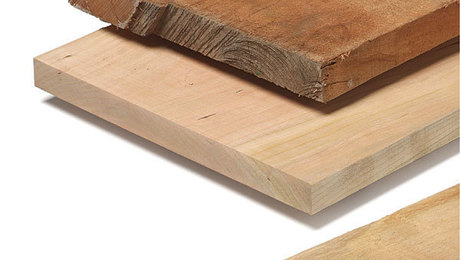
The Language of the Lumberyard

Lumber run!
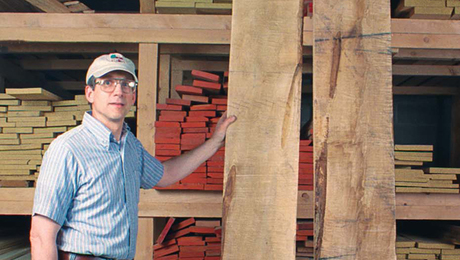
Lumberyard sleuth
Sign up for eletters today and get the latest techniques and how-to from Fine Woodworking, plus special offers.

